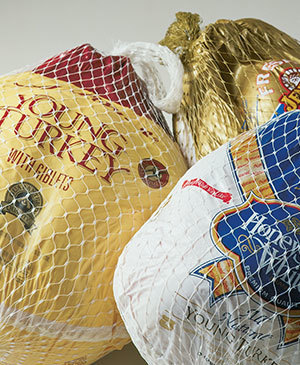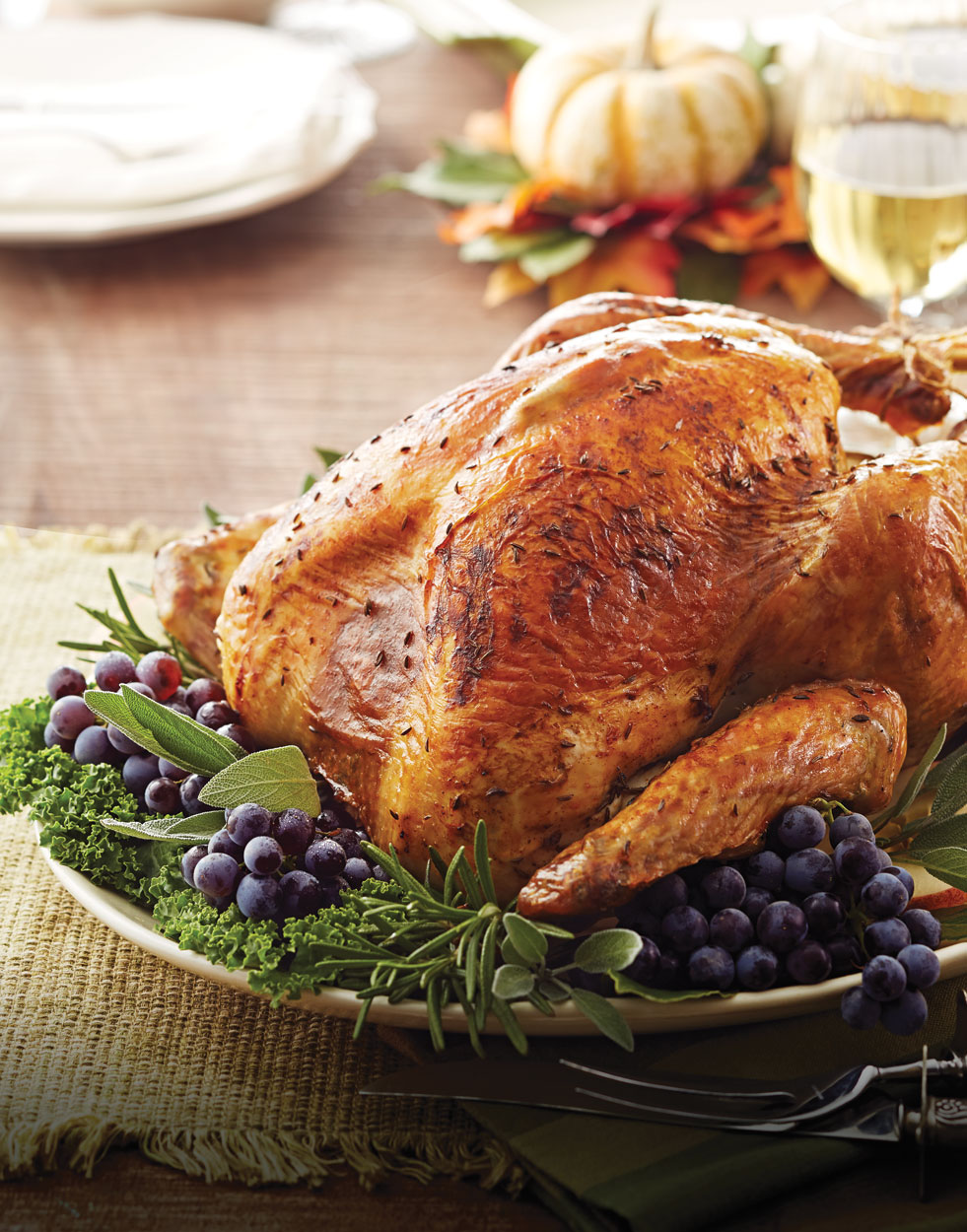Turkey Buying Guide
No matter what your turkey-buying experience level is, we all still have questions about this once-a-year practice. Here’s what you need to know to get the best holiday turkey for your table.

Purchasing a turkey can be complicated. There are so many choices. Here’s what you need to know to ensure that the roasted turkey you bring to the table this year is your best yet.
Based on our experiences in the Cuisine at home Test Kitchen, regular frozen turkeys are almost as flavorful as heritage, free-range, and fresh varieties. Frozen turkeys offer greater availability and cost less. Self-basting turkeys, which are usually injected with broth, save you the hassle of brining.
To gauge the correct size of turkey to purchase, figure that each pound of raw turkey will yield a half pound of cooked meat. Assume that each person will eat a half pound (8 ounces) of turkey, more or less, and buy accordingly. If you want leftovers, add a few pounds to your calculations.
Don’t forget: It takes days to thaw a frozen turkey. An 8-10 lb. bird will need two days thawing time in the refrigerator; an 11-15 lb. turkey will require two to three days; and a 16-20 lb. bird about four days.
Where should I purchase my turkey?
There’s no magic here. Your local grocery store is the best choice. Here’s why.
First, most large grocery chains will have a wide selection of turkey types, as well as a range of sizes.
Second, larger stores start to stock turkeys the first of November. Shop early for the exact turkey you want. Most grocers will store it for you so you don’t have it hogging space in your freezer. The biggest problem you’ll have will be finding the size you want. Don’t wait until the last minute or they’ll be picked over.
Finally, most grocery stores have a lot more sources for special orders than smaller meat markets. So for really large birds, or special requests (like free-range or kosher), ask the meat department to order it for you. They have the resources and can probably get what you want — but do it early (at least two weeks before you need it).
FROZEN OR FRESH?
Frozen: The biggest reason to buy a frozen turkey is availability. Thawing is always an issue, so planning ahead is key. We couldn’t tell a flavor difference between the frozen and fresh turkeys. We were, however, always able to get the size we wanted in a frozen bird — not always true for a fresh one.
Fresh: To be labeled “fresh,” turkeys must be blast chilled to 24–26° immediately after processing. So they're actually kind of frozen. This makes the surface of the turkey stiff, but not rock-hard, like frozen turkeys. The surface softens as it sits in your store’s meat case. And one other thing...Fresh turkeys aren’t normally as big as some of the frozen ones you can get. If size is important, fresh isn’t for you.
FREE-RANGE OR STANDARD?
Free-range: For the “free-range” designation, the only thing the USDA requires is that the birds have access to the outdoors. It’s got nothing to do with what they’re fed or what their living conditions (like crowded pens) are like. The free-range turkeys we roasted browned great, but the flavor was bland and the meat was dry.
Standard: We think the standard, “everyday” turkeys you find at the grocery store are the best bang for your buck — for almost a dollar less per pound, they were consistently more flavorful and juicy than the free-range turkeys.
BASTED OR NATURAL?
Basted: Several brand-name turkeys go through a process where they’re injected with a solution of water or broth, sugar, salt, and sometimes vegetable oil. Others have “butter” stuffed under the skin. These birds do seem juicier (especially during carving). And the solution does enhance the flavor of the turkey.
Natural: If you want to avoid the excess handling that basted turkeys go through, you can buy a natural one with no artificial ingredients or color. Be warned, though — “natural” just means that nothing extra is added to the turkey. It does not mean the bird was raised differently than standard turkeys. And read the labels. Some natural brands are still basted, only with natural stuff, like water, sugar, and salt.
Ready to get cooking? Check out all of our recipes for Thanksgiving main dishes, sides, and of course desserts.
Product Recommendations
Interested in cooking? Need some supplies?
Check out some of the tools we like. All products featured on Cuisine at Home are independently selected by our editors; we may earn an affiliate commission from qualifying purchases through our links.
